The Brazos River runs from Blackwater Draw in New Mexico south through East Texas all the way to the Gulf of Mexico. As one of the biggest rivers in Texas, it’s no surprise that there are more than a few snakes in the Brazos River. These snakes range from small and harmless, to large and extremely venomous. Some live in riverine settings on the banks of the mighty Brazos, while others spend their time hunting for rodents on the river bluffs.
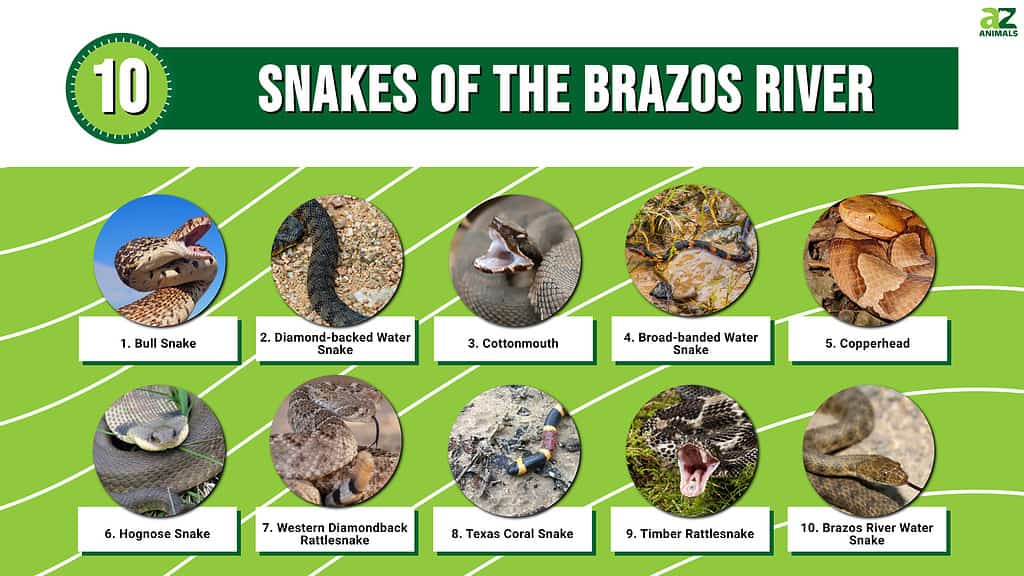
Here, we’ll take a deep dive into ten snakes of the Brazos River. We’ll learn where each lives, what they hunt, and whether or not they’re dangerous to humans. We’ll also find out what they look like, and whether or not they’re endangered.
10. Brazos River Water Snake

Brazos River water snakes are also called Harter’s snakes.
©iStock.com/Zdenek Macat
Brazos River water snakes are not common snakes, they’re only found along the upper Brazos River. They’re listed as Threatened in Texas and are therefore protected by state law. But, if you happen to run into one of these brown, fish-eating snakes, have no fear. They’re not venomous and rarely bite humans. Brazos River water snakes also eat crayfish, salamanders, and frogs.
9. Timber Rattlesnake

The timber
rattlesnake
is a large, venomous snake native to North America.
©Frode Jacobsen/Shutterstock.com
Timber rattlesnakes are some of the most dangerous snakes of the Brazos River. They can grow up to six feet long, and, as pit vipers, have deadly venom. The good news is that they rarely bite humans, and usually do so as a last means of self-defense. These snakes are light brown with dark brown, hexagonal bands around their bodies. They have triangular heads and rattles on their tails. Timber rattlesnakes eat small rodents, like mice and rats, as well as rabbits and squirrels.
8. Texas Coral Snake
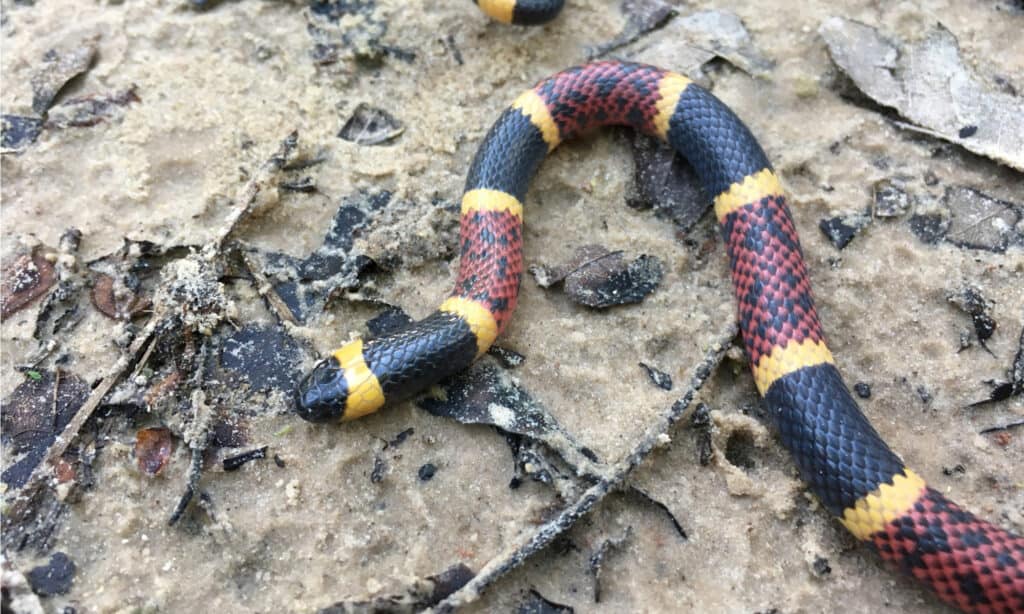
The Texas coral snake may look similar to the eastern coral snake, but it is in fact a distinct species.
©Joe Farah/Shutterstock.com
Texas coral snakes are endemic only to Texas, as well as parts of Mexico, Louisiana, and Arkansas. These snakes grow up to four feet long and have slender bodies with heads the same width as the neck. They’re characterized by alternating black and red bands divided by narrower bands so that black and red never touch. Texas coral snakes make a living out of eating smaller snakes, like earth snakes. They’ll also eat other coral snakes, as well as lizards. These snakes are highly venomous, and should not be handled or approached.
7. Western Diamondback Rattlesnake

Crotalus atrox, the western diamondback rattlesnake, is closely related to the eastern diamondback rattlesnake.
©Alexander Wong/Shutterstock.com
These snakes of the Brazos River are highly venomous pit vipers. On average, they grow up to five feet long but may exceed six feet in length. Western diamondback rattlesnakes are light brown with diamond-like patterning and black and white markings near their rattles. They primarily eat lizards, small birds, rats, gophers, rabbits, and mice. Western diamondbacks are not considered endangered.
6. Hognose Snake
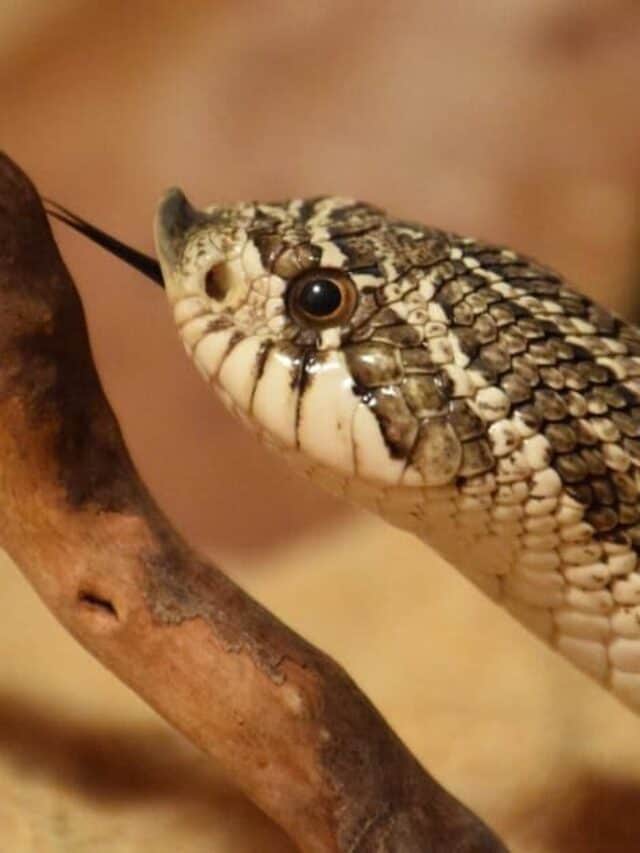
The western hog-nosed snake lives throughout much of North America and Mexico.
©Bryn Thomas/Shutterstock.com
These snakes get their name from the characteristic upturned noses that resemble porcine (pig) snouts. Western hognose snakes are light brown with medium brown splotches along the sides and back. They grow up to two feet long and have narrow heads with short snouts. These snakes are venomous and eat mostly frogs, toads, and lizards.
5. Copperhead

Agkistrodon contortrix, the copperhead snake, lives throughout much of the eastern United States in a wide variety of habitats.
©Creeping Things/Shutterstock.com
Copperhead snakes of the Brazos River are venomous, but their bites are rarely life-threatening. They get their name from their most distinctive feature, their copper-colored head. Copperheads are the only snakes with their unique hourglass pattern. They grow up to three feet long and eat everything from insects to lizards and mice. They’re currently listed as not Threatened or Endangered.
4. Broad-banded Water Snake
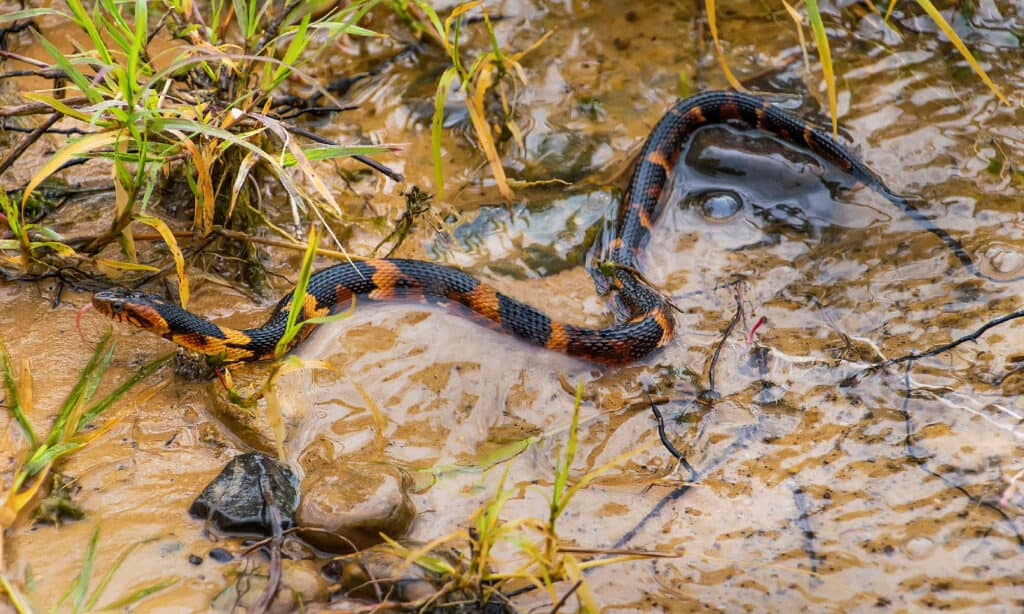
Nerodia fasciata, the broad-banded water snake, is a member of the large Colubridae family of snakes, most of which are semi-aquatic.
©iStock.com/williamhc
Broad-banded water snakes are not venomous and present no danger to humans. They grow up to 3.5 feet long and are generally dark gray or green with lighter undersides. As their name suggests, these snakes spend most of their time in the water, where they hunt frogs and small fish.
3. Cottonmouth
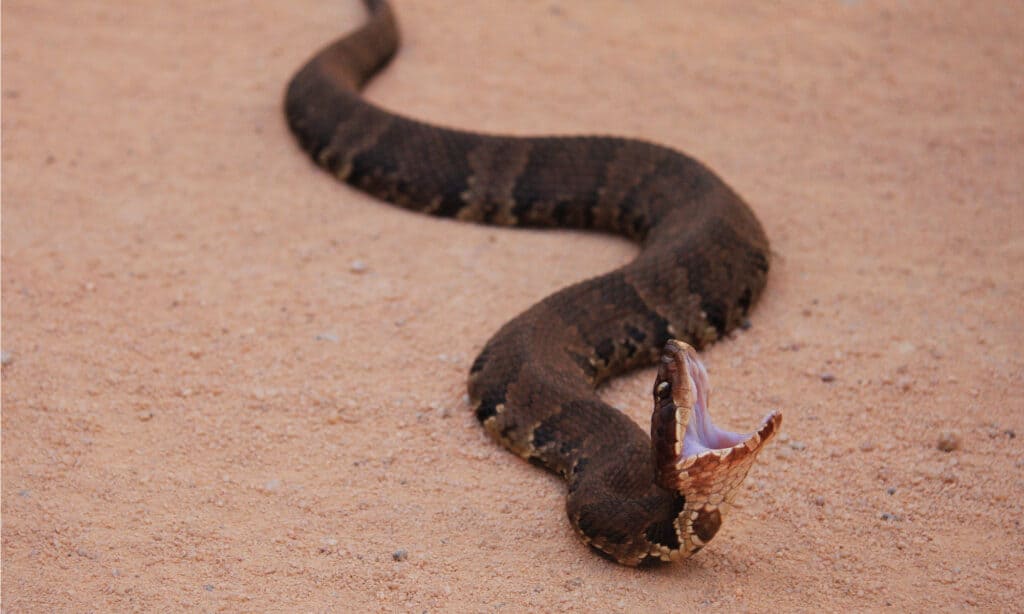
Agkistrodon piscivorus, the cottonmouth, is also known as the water moccasin.
©Nathan A Shepard/Shutterstock.com
These snakes of the Brazos River live near sources of fresh water like slow-moving rivers, lakes, ponds, swamps, or wetlands. Cottonmouths grow up to four feet long and have heavy bodies with white mouths. They’re highly venomous, and bites require prompt medical attention. Cottonmouths eat a wide variety of prey, including small birds, mammals, baby turtles, lizards, and other snakes. They’re not currently listed as Threatened or Endangered.
2. Diamond-backed Water Snake
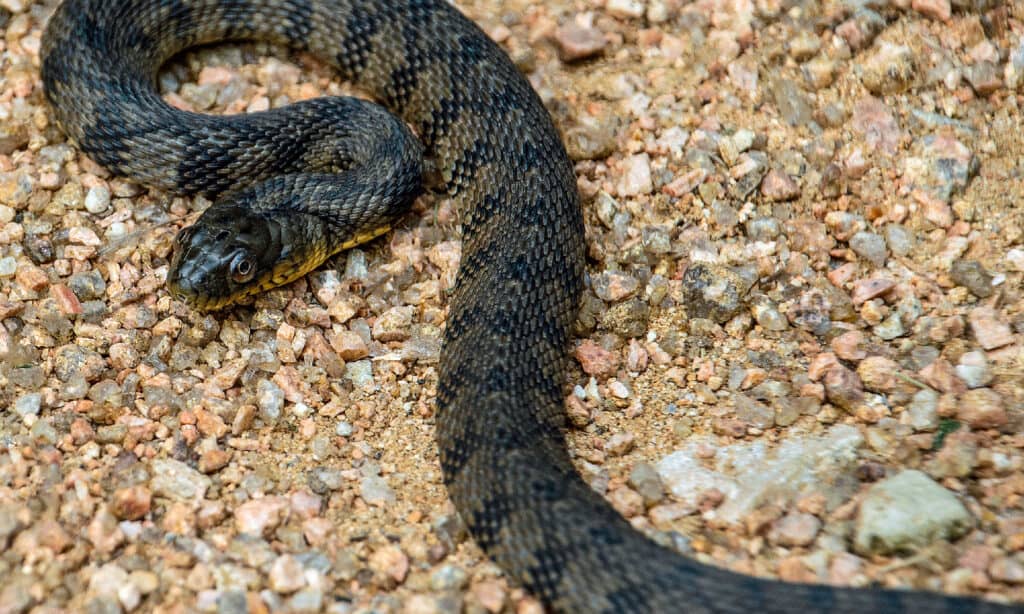
Nerodia rhombifer, the diamond-backed water snake, lives only in freshwater, not salt water.
©iStock.com/williamhc
Diamond-backed water snakes are neither venomous nor endangered. They grow up to four feet long and have yellowish-olive-green bodies with irregular dark bands and pale undersides. They bear a superficial resemblance to rattlesnakes and consequently are often killed by humans. These snakes primarily eat fish and amphibians and spend most of their time either in or near the water.
1. Bull Snake

Pituophis catenifer, the bull snake, is a subspecies of the gopher snake.
©GoodFocused/Shutterstock.com
Bull snakes of the Brazos River can grow very large, over seven feet in some cases. They’re common throughout the Great Plains as far north as Canada and as far south as Mexico. Bull snakes have heavy bodies characterized by a base tan color with large brown blotches on the back and smaller brown blotches along the sides. They’re not venomous and eat mostly gophers, rats, mice, ground squirrels, and other mammals. Bull snakes are not currently listed as Threatened or Endangered.
The photo featured at the top of this post is © Scott Delony/Shutterstock.com
Discover the "Monster" Snake 5X Bigger than an Anaconda
Every day A-Z Animals sends out some of the most incredible facts in the world from our free newsletter. Want to discover the 10 most beautiful snakes in the world, a "snake island" where you're never more than 3 feet from danger, or a "monster" snake 5X larger than an anaconda? Then sign up right now and you'll start receiving our daily newsletter absolutely free.
Thank you for reading! Have some feedback for us? Contact the AZ Animals editorial team.






